Web3 is the name some technologists gave to the idea of a new kind of internet service built through decentralized blockchains. It’s a public domain that operates on permissionless blockchains. The term has been around for some years. It’s basically the same systems applied in cryptocurrencies like Bitcoin and Ether. But, it has now come in a new style.
Blockchains are ‘write only.’ This implies that you can add information to them, but you cannot erase it. If you’ve always wondered how cryptocurrencies operate, understand that they run on ‘permissionless blockchain.’ They have no centralized control and don’t need users to trust or understand anything about them. This is the same concept that applies to Web3.
In short, permissionless blockchains are open or trustless blockchains. They are networks accessible by the public. Everyone can participate in the consensus procedures blockchains use to authorize data and transactions.
How Has Blockchain Technology Transformed the Web?
The initiation of Blockchain technology has brought transformations in the internet world. Web 3.0 is an exclusive opportunity for people to take control of their data. With this invention, you can exchange value with each other without requiring an intermediator.
Web3 is the future of the internet. It makes users have the ‘feeling of belonging.’ This vision of the new, blockchain-based chain offers a read-write-own web version. Users have more financial control and stake over the web communities they interact with.
PCs and smartphones came in and transformed the user experience online. But, Web3 promises an even better transformation of the online user experience. Blockchain presents as a solution to user confidentiality and control financial exclusion concerns.
What’s the Difference Between Permissionless and Permissioned Blockchain?
Permissionless means public blockchains that anyone can participate in authorizing and mining transactions. The public is also free to use the system to conduct the buying, selling and trading of assets.
On the other hand, a permissioned blockchain is a disseminated ledger that is not available for public access. Only users with permissions can access it. And, they can only execute specific actions permitted to them by the ledger administrators. The users also have to recognize themselves through documentation or other digital means.
What Does Web3 Mean for Marketing?
Web 3.0 marketing continues to revolutionize how we think about the internet. It’s a conception that explores the web by searching for trends and new technologies. Businesses and companies are still trying to make sense of the rapidly changing domain.
Word has it that organizations which get the concept right can receive great rewards from blockchain & web3 marketing. That’s why many companies are going forth to test the Web3 world. The truth is that; some have already gained tremendous success.
So, Why Should Marketing Organizations Implement Blockchain Technology?
Blockchain comes in as an industrial disrupter in marketing. Even though most of these blockchain services are still in their early stages, implementing them into your marketing suite can offer your business and clients’ immense value. Let’s explore them below:
- Enhances Trust and Transparency with Clients
When you use blockchain in your marketing, you can enhance trust and transparency with your clients. For instance, blockchain can demonstrate to clients how big companies use their data in their advertising efforts. With the traditional, centralized client-based database, it’s almost impossible to know important details like:
- What a company does with your data
- Whom they share your data with
- How they do share it down
- Reduced Advertising Fraud
In trying to find the answer to the question; ‘how can companies protect their ad spending from fraud? Blockchain technology comes in yet again.
One increasingly beneficial use of blockchain is user verification. You can employ blockchain on ad networks to cut off the middleman. This makes it easier to combat fraud since you can track who interacts with your ads.
So, advertisers that employ the open ledger blockchain can identify and blacklist the sources of fraudulent or wasteful ad clicks. This is significant to help marketers reduce wasteful spending on advertisements.
Both blockchain transparency and liability mitigate advertising fraud. As a result, businesses can attain improved accountability for their digital spending.
How Do Marketers Benefit from the Decentralization of Web 3.0?
With the decentralized nature of Web 3.0, the benefits include:
- No Intermediary
The centralization nature of most social media platforms makes them vulnerable to data breaches and manipulation of information. However, decentralization enhances data ownership. This forms a significant part of attaining true personal freedom on the web.
- No Possibility of Server Failure
The use of decentralized servers lowers the risk of server failure. The issue of server failure tends to attack many centralized web services like Facebook and Google Docs.
Decentralization also opens the doorway for ultimate privacy rights. It allows individuals to hold their private data rather than letting corporations have and sell it to advertisers.
- No Data Theft
Data Theft was common in Web 2.0. Anytime you had personal data on the cloud, you were almost sure to fall prey to data theft at some point.
The more decentralized our digital lives become, the less we become vulnerable to those who wish to exploit our data for their purposes.
Final Thoughts
With the introduction of blockchain technology, Web 3.0 is a remarkable opportunity for people to take complete control over their data. But there is more, as we have shared above.
Follow and connect with us on Twitter, Facebook, Instagram, Youtube








